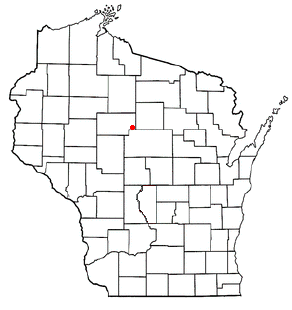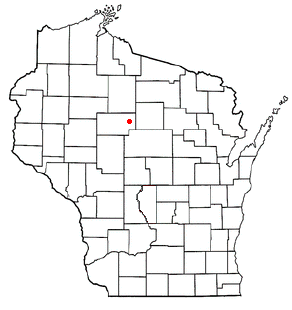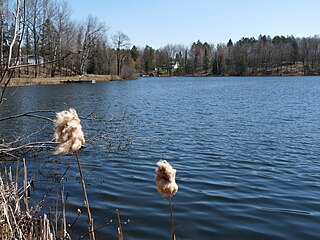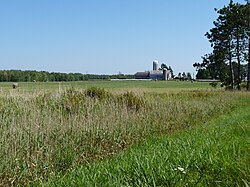
Taylor County is a county in the U.S. state of Wisconsin. As of the 2020 census, the population was 19,913. Its county seat is Medford. It is mostly rural, lying roughly where corn and dairy farms to the south give way to forest and swamp to the north.

Browning is a town in Taylor County, Wisconsin, United States. The population was 850 at the 2000 census. The unincorporated community of Gad is located in the town.

Ford is a town in Taylor County, Wisconsin, United States. The population was 276 at the 2000 census. The unincorporated community of Polley is located in the town.

Goodrich is a town in Taylor County, Wisconsin, United States. The population was 510 at the 2010 census.

Greenwood is a town in Taylor County, Wisconsin, United States. The population was 642 at the 2000 census. The unincorporated community of Interwald is located in the town.

Grover is a town in Taylor County, Wisconsin, in the United States. As of the 2010 census, the town population was 256. The unincorporated community of Perkinstown is located in the town.

Hammel is a town in Taylor County, Wisconsin, United States. The population was 735 at the 2000 census. The unincorporated community of Murat is located in the town.

Holway is a town in Taylor County, Wisconsin, United States. The population was 854 at the 2000 census.

Jump River is a town in Taylor County, Wisconsin, United States. The population was 311 at the 2000 census. The town takes its name from the Jump River which flows through its northwest corner. There is also a census-designated place called Jump River located partially in the town.

Little Black is a town located in Taylor County, Wisconsin. The village of Stetsonville lies partly in the town, and the hamlet of Little Black. As of the 2000 census, the town had a total population of 1,148.

Maplehurst is a town in Taylor County, Wisconsin, United States. The population was 359 at the 2000 census.

McKinley is a town in Taylor County, Wisconsin, United States. The population was 418 at the 2000 census. The census-designated place of Jump River is located partially in the town.

Molitor is a town in Taylor County, Wisconsin, United States. The population was 324 at the 2010 census.

Pershing is a town in Taylor County, Wisconsin, United States. The population was 180 at the 2000 census. The unincorporated community of Donald is located in the town.

Roosevelt is a town in Taylor County, Wisconsin, United States. The population was 444 at the 2000 census. The village of Lublin lies within the town of Roosevelt. The unincorporated community of Bellinger is also located partially in the town.

Taft is a town in the southwest corner of Taylor County, Wisconsin, United States. The population was 361 at the 2000 census. The unincorporated community of Bellinger is located partially in the town.

Westboro is a town in Taylor County, Wisconsin, United States. The population was 660 at the 2000 census. The census-designated place of Westboro is located in the town. The unincorporated community of Queenstown is also located in the town.

Medford is a town in Taylor County, Wisconsin, United States. The population was 2,216 at the 2000 census. The City of Medford lies mostly within the town boundaries.

Rib Lake is a town in Taylor County, Wisconsin, United States. The population was 768 at the 2000 census. The village of Rib Lake is completely surrounded by the town.

Perkinstown is an unincorporated community located in the town of Grover, Taylor County, Wisconsin, United States. The hamlet is scattered around Lake Kathryn, surrounded by Chequamegon National Forest, 10 miles (16 km) east-northeast of Gilman, reached by County Highway M and several gravel roads.






















